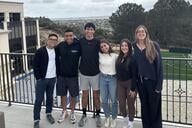You have /5 articles left.
Sign up for a free account or log in.
In graduate school my friends and I occasionally amused ourselves by imagining what our dissertation topics said about us. Female violence? Prostitution and “fallenness”? Sibling incest? They may have been safely “literary” topics, but what did it say about us that we had spent so much time on these topics rather than, say, gardens?
We didn’t pursue those questions too far, of course. But it’s really not a bad question. In my own case, my dissertation on sibling relationships in 19th-century women’s literature (not only incest!) arose out of my love for George Eliot’s The Mill on the Floss. That novel, in turn, no doubt spoke so deeply to me in part because of its clear-eyed examination of the brother-sister dynamic. As one of four children, I found — and still find — sibling bonds to be among the most complex, interesting, and understudied of human relationships.
I’m thinking about my long-ago dissertation right now because I’ve just finished a new essay collection that finally validates the question my friends and I used to ask. A Narrative Compass: The Stories That Guide Women’s Lives (ed. Betsy Hearne and Roberta Seelinger Trites; U Illinois P, 2009) collects the stories of 19 women academics who detail the ways a variety of narratives have served as shaping forces in both their careers and their lives. As the editors remind us in their introduction, storytelling can serve as a means of learning, processing, and conveying information; “internalized stories,” then, “provide a narrative means for processing data” (xi). The women whose stories are included in the anthology identify “narrative compasses” — stories that they have so deeply internalized as to turn them into epistemological frameworks, means of analyzing and processing the data of their work and their lives. The way the collection blends narrative theory and personal story is not only delightfully readable, it’s empowering — and it suggests to me, among other things, a new approach for my creative nonfiction writing class.
There are surprises and delights in the collection: Wendy Doniger’s recognition that the gift of Forster’s A Passage to India set her on her path; Karen Coats’s subtle intertwining of Lacanian theory, children’s literature, and parenting a special-needs child; Christine Jenkins’s evocation of Burnett’s The Secret Garden in her own passage to becoming a teacher and scholar of children’s librarianship. I’m sure every reader will have his or her own favorite stories; as I was reading, I kept being reminded of the importance of all kinds of stories in my own development — not just the ones I’ve studied and taught, but the ones I’ve read, and told, and been told. Roberta Seelinger Trites’s essay on Louisa May Alcott reminded me of the ways Little Women has woven in and out of my own life, for example; Maria Tatar’s confession that what she remembers most about her childhood reading of Snow White is an illustration recalled to me the Wanda Gág illustrations in my own childhood copy of Grimms’ Fairy Tales (inherited from — and colored in by — my mother). But it was Betsy Hearne’s essay about “Beauty and the Beast” that elicited a gasp of recognition from me — not so much for the tale she tells as the anecdote she includes of a child rewriting the story for herself — because the child is, in fact, my own daughter. I’ve never met Betsy Hearne, but my daughter’s play with a Belle/Barbie once captured the interest of a colleague, who told a story about it on a listserv, where Hearne saw it. The punchline of the story is important: in my daughter’s game, Belle refuses to marry the Beast, saying, “You’re not my boss. I’m going to put you in the zoo” (204).
So there it is: stories may shape and guide us, but we remake them as well. My daughter’s revision of a familiar tale intersects with one a scholar studies, and she makes a new story out of it. My own narrative compass may be The Mill on the Floss or, perhaps, another sibling story; I’m not sure yet. What I do know is that I’m shaping it right now, even as it shapes me.

